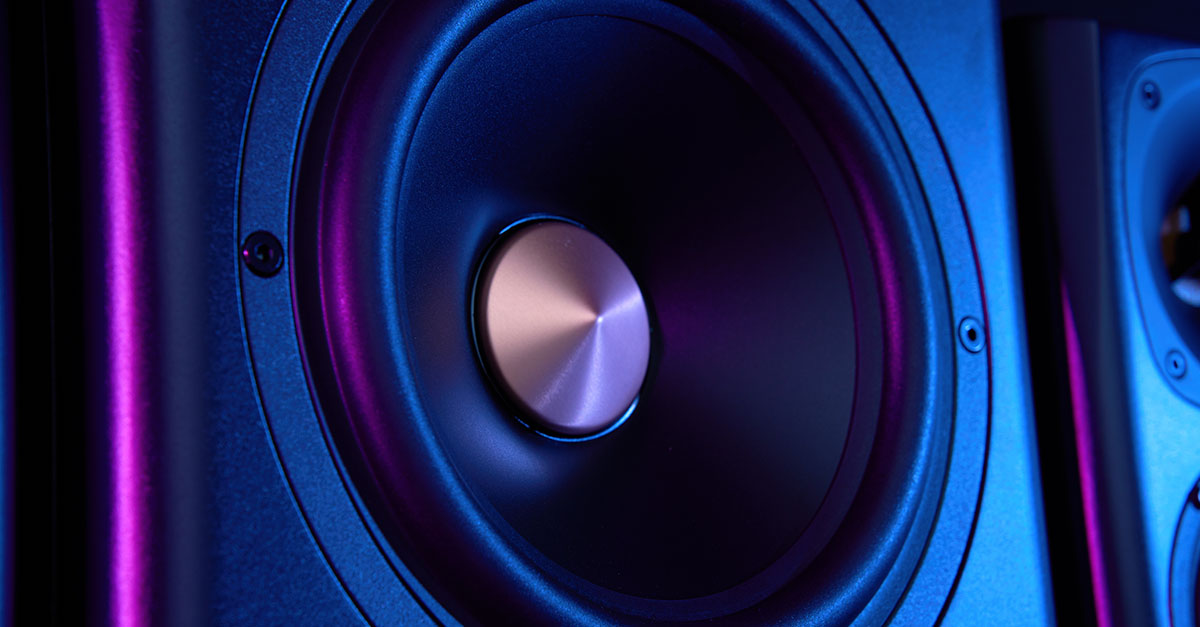Automatically Compensates Weaker Bass at Low Volume Level
- Holds the Maximum Swing within a Safe Zone at High Volume
- Suitable for Small Audio and TV
Even a perfect recording played back on a high-end audio system will lack bass at low volume levels. This academically-proven phenomenon is often experienced when we listen to music at a low volume. To solve this problem a low frequency compensation technology called “Loudness Control” was developed in 1970’s. It was based on the Fletcher-Munson equal loudness curve and became a feature on consumer audio products, but died out due to disappointing performance. A couple of reasons of the failure were: (1) the wrong compensation curves were used[1] and (2) a lack of adaptive operation linked with actual playback loudness.[2]
[1] The equal loudness curves themselves were used as the compensation curves, instead of the differences between the curves.
[2] User could only turn Loudness Control ON or OFF. No continuous (or seamless) compensation control against the actual playback loudness was offered.
Eilex Auto-Bass has been developed based on current psycho-acoustic science and the latest digital audio processing technologies. It compensates for missing bass at the correct range with the correct amount of boost, working adaptively according to the playback level.
It is ideal to use the Eilex PRISM APVD (Acoustic Power Volume Density) equalization and the Auto-Bass process, which maintains bass levels even as the volume is turned down. It is essential to have a flat APVD frequency response of the system, as in the natural world, when applying Auto-Bass. PRISM equalization achieves near-ideal acoustic power frequency response for the playback system at normal loudness.
Eilex Auto-Bass is designed to reproduce recorded materials which are typically monitored at about 80-Phon at the mastering studio. It boosts bass range of low-level playback, such as late night and background music. During louder playback it constrains the bass amplitude within a safe range to avoid speaker distortion and amplifier saturation.
Note: Eilex Auto-Bass is not a process to generate low frequencies from the speakers which have no bass response. It is necessary that the speakers have some bass response at a low level reproduction.
Actual Operation of Eilex Auto-Bass
The following three pictures illustrate the actual operation of Eilex Auto-Bass using white noise. Fig. 1 shows the relatively flat response of a normal playback level. Fig. 2 shows lower level (-10dB) where slight bass boost is observed. Fig. 3 shows a larger bass boost when the playback level is reduced by -20dB. Thus, the Eilex Auto-Bass automatically and continuously adjusts the bass to its ideal levels.
Note: When we play back softly, we normally apply about -20 dB attenuation to the typical loudness.



Actual audio signals, unlike white noise, have complex frequency characteristics and dynamically changing volume levels. Eilex Auto-Bass instantly reacts to changes in frequency and amplitude without exhibiting any artifacts.
The pictures on the following page illustrate how Eilex Auto-Bass performs with actual musical materials. The left column contains images of the original materials while the right column has the pictures of the materials after Eilex Auto-Bass is applied. Music with strong bass is used for easier observation.
Fig. 4 is the complete waveform of the original. Fig. 5 is the waveform after Eilex Auto-Bass is applied. There is no significant difference because of the high signal level. Fig. 6 is the frequency response at a point A (the point A indicates the same point of time on all other pictures on the page). There is a fundamental peak at 35Hz (the first peak from the left) and its second harmonic peak (the second peak from the left) is seen at 70Hz. Fig. 7 is the frequency response at point A after Eilex Auto-Bass is applied. A slight boost is seen in the bass range, but overall there is no big change from the original.
Fig. 8 is the waveform of the original attenuated by -10dB. Fig. 9 shows a slight increase in the amplitude after Eilex Auto-Bass is applied. The difference in the frequency responses are seen in Figs. 10 and 11. The bass gets about 8dB boost.
Fig. 12 is the waveform of -20dB attenuated original, while Fig. 13 is with Eilex Auto-Bass. The difference in the frequency responses are seen in Figs. 14 and 15. The bass range gets about 15dB boost.
It should be noted that Eilex Auto-Bass does not alter the source signal except at the low frequency range.












